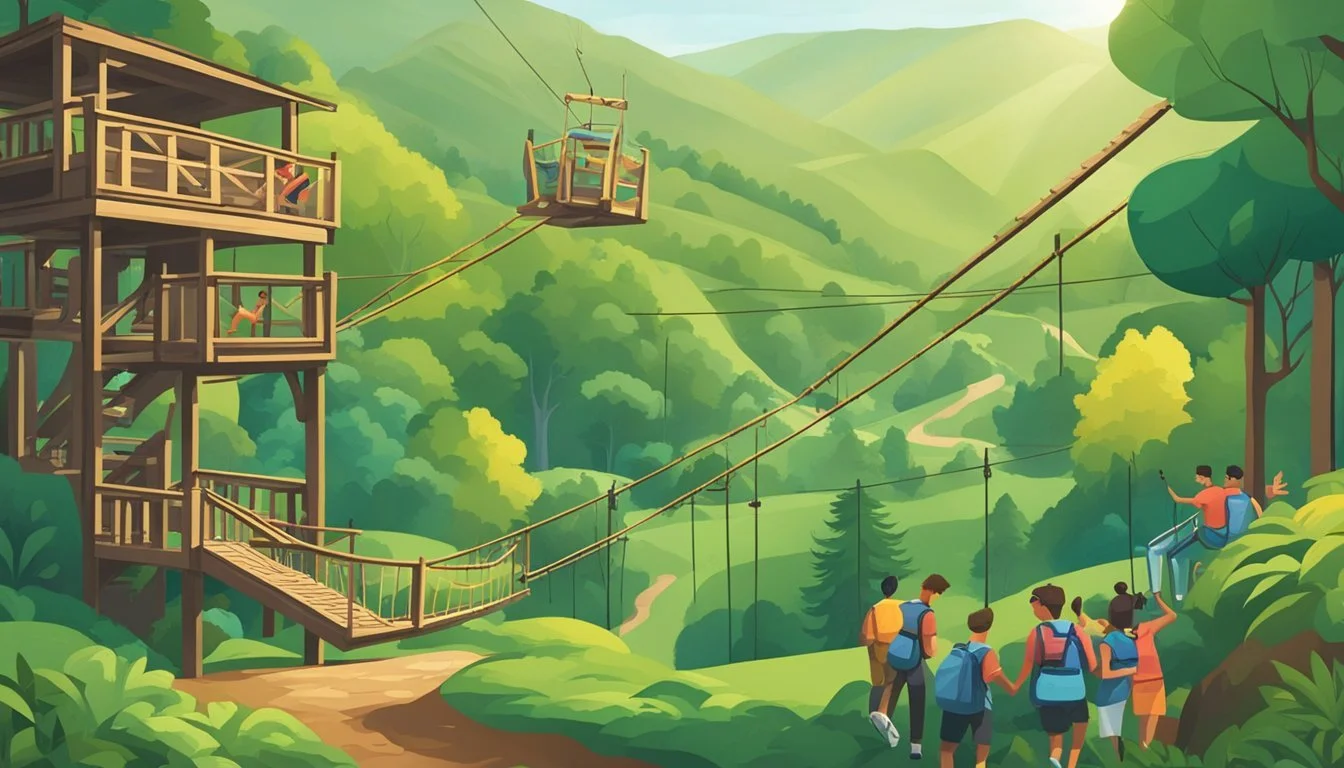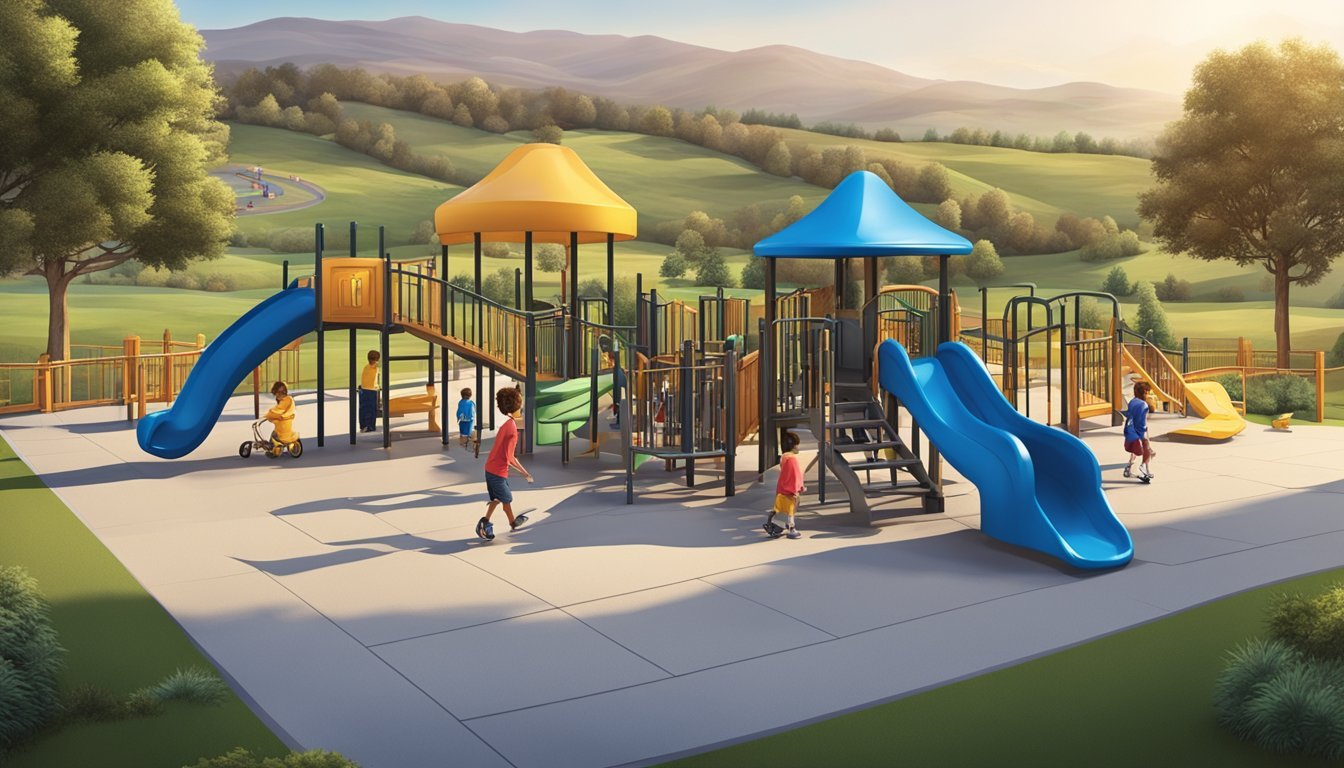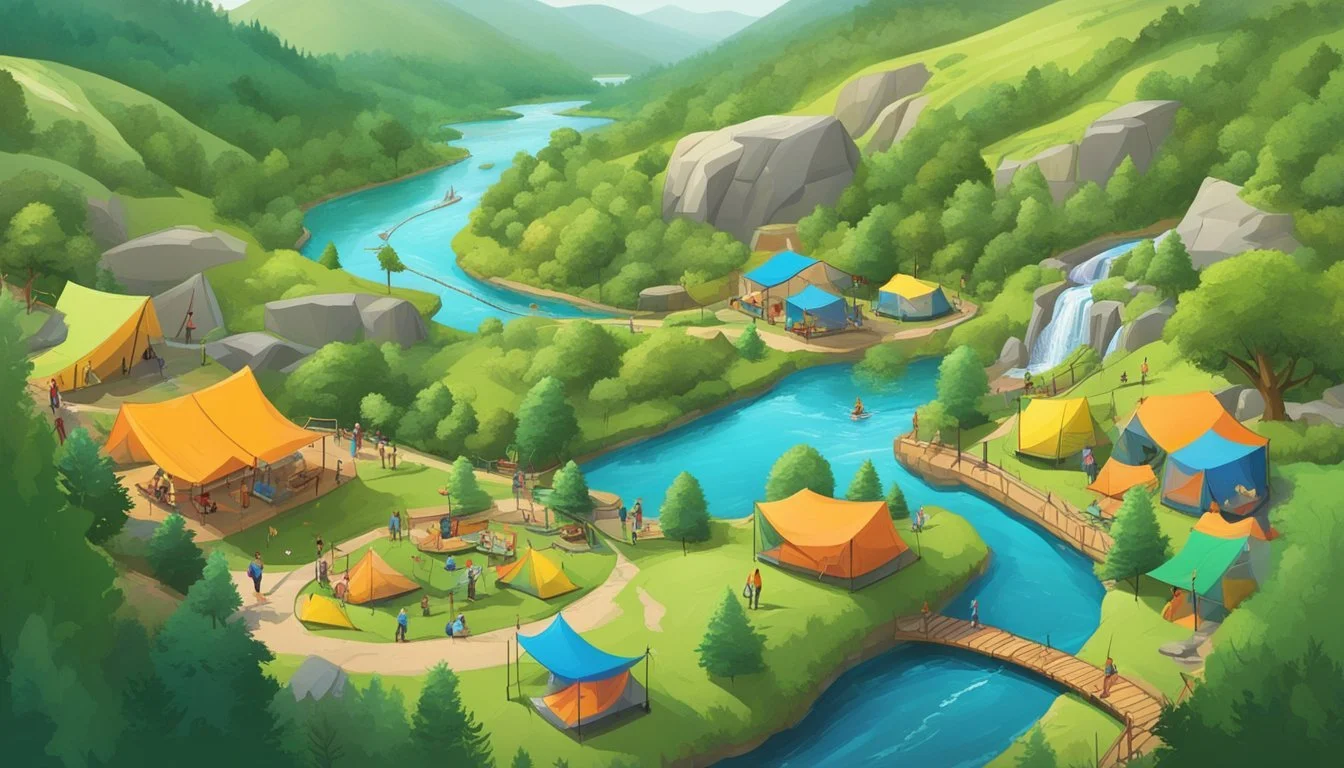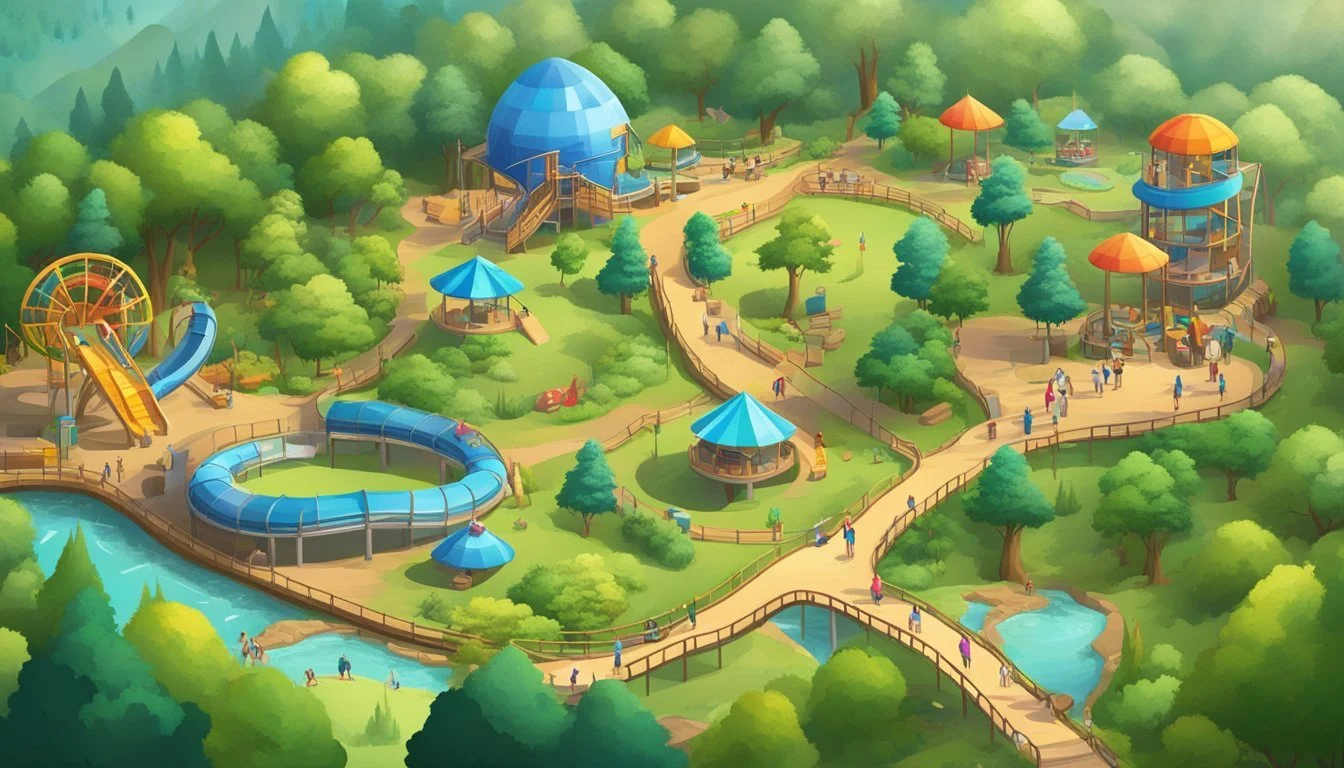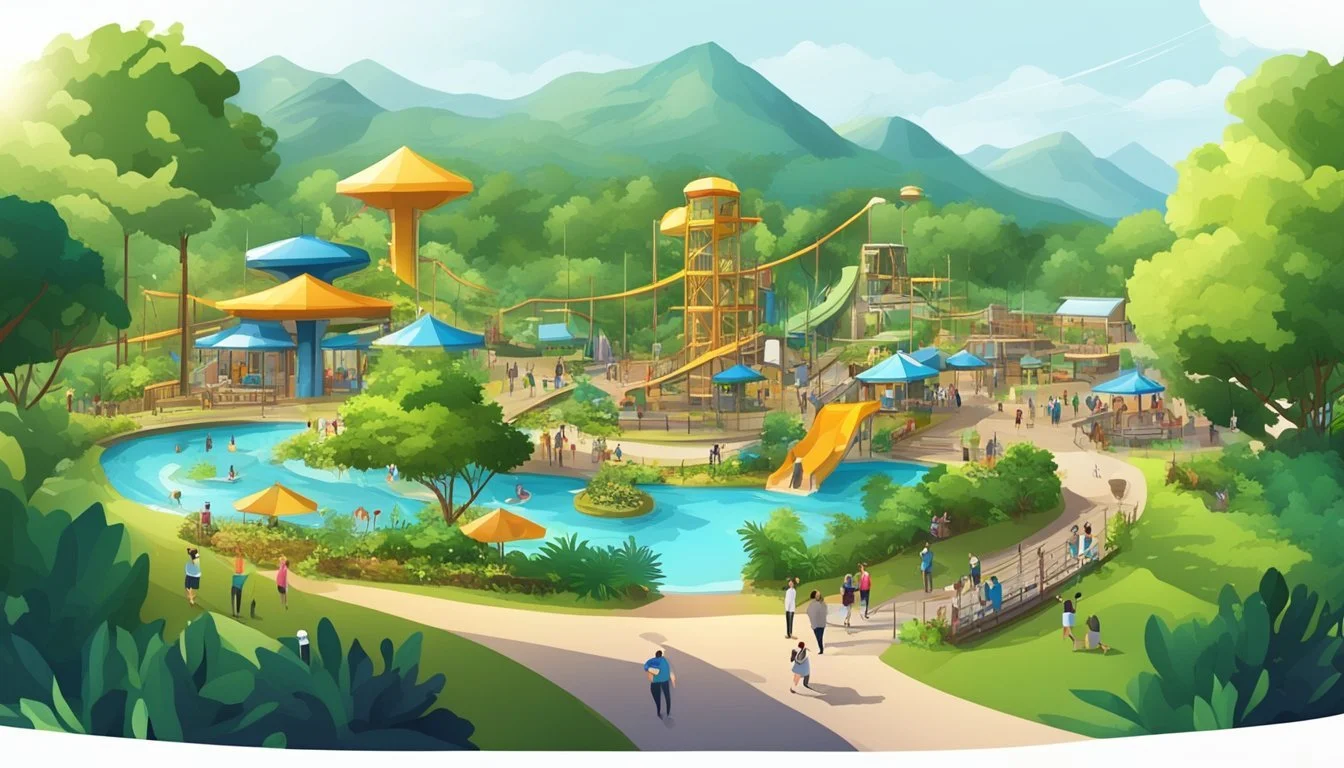Free Land for Adventure Parks
Opportunities for Outdoor Fun
Finding free land for your adventure park can be a game-changer for your budget and project feasibility. Public lands, like those managed by the Bureau of Land Management (BLM) and many national forests, offer vast areas where you can potentially develop outdoor activities without upfront land purchase costs. This allows creators to focus their resources on designing and constructing an exciting destination.
Using free land for your adventure park also means you can invest more in the equipment and attractions themselves. From ropes courses and zip lines to playgrounds and nature trails, these features can be prioritized to enhance visitor experiences. Though essential to research legal requirements and land usage permits, leveraging free public land can provide a fantastic foundation for a thrilling and sustainable adventure park.
Building an adventure park is not only about the physical structures but also about fostering connections with nature. Public lands often feature beautiful and diverse landscapes that can make your park more appealing. Access to such lands encourages visitors to engage in physical activities and experience the outdoors, aligning perfectly with the ethos of adventure parks.
Conceptualizing the Adventure Park
Creating an adventure park involves detailed planning and a clear understanding of the park's purpose and theme, as well as a thorough landscape and location assessment.
Identifying the Purpose and Theme
Defining the purpose of the adventure park is essential. It can range from recreational fun to educational experiences. A park designed for families might include features like easy trails and safe, themed play areas, whereas a park aimed at thrill-seekers might focus on high rope courses and intense zip lines.
Themes provide a cohesive experience. Themes can range from jungle explorations to space adventures, with design elements and activities reflecting this concept. Sketching a thematic model helps visualize ideas. The theme should guide including the types of challenges and elements like climbing walls or quick jumps.
Landscape and Location Assessment
Choosing the right location maximizes the potential of an adventure park. Free land that is spacious, scenic, and has natural features like trees and varied terrain offers the best backdrop. Consider environmental factors and evaluate how the landscape can enhance specific park activities.
Landscape assessments help analyze the feasibility of building different park sections. For example, natural trees can support rope challenges, while open spaces are ideal for large ziplines. Creating a sketch of the intended layout optimizes space usage. Selecting free land with natural beauty and structural integrity ensures a solid foundation for the park's infrastructure.
Planning and Design
Effective planning and design for adventure parks involve creating a comprehensive master plan, considering the needs of various age groups, and integrating environmental considerations.
Creating a Master Plan
Creating a master plan is the foundational step in adventure park design. It involves a detailed layout including key features like ropes courses, zip lines, rope swings, and play areas. The master plan should delineate zones for different activities and identify locations for safety equipment and first aid stations.
The planning process should also include budget allocations for equipment, installation, and marketing. An estimated budget for equipment might range from $30,000 to $150,000, while marketing could cost between $5,000 to $40,000 per month. Clear timelines and milestones should be established to ensure the project progresses smoothly.
Designing for Different Age Groups
An adventure park must cater to both kids and adults. Designing for different age groups involves creating zones with varying difficulty levels. Elements like ziplines, bridges, and ladders can be color-coded to indicate difficulty, ensuring safety and enjoyment for all ages.
For younger children, play areas with simpler rope swings and safer, shorter zip lines are ideal. For teenagers and adults, more challenging courses with higher platforms and complex elements provide excitement. Mixing age-appropriate attractions allows families to have a fulfilling experience together.
Integrating Environmental Considerations
Integrating environmental considerations ensures the adventure park is sustainable and in harmony with nature. Using natural materials and designing around existing trees and landscape features minimize environmental impact. Platforms can be built on trees or poles, preserving natural ground cover and vegetation.
Incorporating recycling stations and eco-friendly signage promotes environmental responsibility among visitors. The design should also include measures to handle stormwater runoff and protect local wildlife habitats. Balancing adventure activities with environmental stewardship reflects a commitment to sustainability and enhances the park's appeal.
Legal Framework and Safety Regulations
Navigating legal frameworks and ensuring rigorous safety standards are crucial in the establishment and operation of adventure parks, contributing to investment opportunities and revenue. This section explores the key aspects of zoning permissions and effective safety measures.
Understanding Zoning and Permissions
Adventure parks must comply with local zoning laws and obtain the necessary permissions. These regulations vary by location and can influence the size, type, and scope of activities offered.
Local government bodies typically dictate zoning classifications. Operators must work closely with these authorities to ensure that the land is designated for recreational use. Applications for these permissions should include detailed plans that outline the intended use of the land, ensuring transparency and compliance.
Adhering to zoning laws not only mitigates legal risks but also promotes community support. Securing the right permits and zoning approvals is foundational to the park’s legitimacy and long-term success.
Implementing Safety Standards
Establishing an adventure park requires stringent safety standards to protect participants and staff. Regulatory bodies often provide guidelines that cover equipment, training, and emergency procedures.
Compliance with these safety standards is essential and often includes regular inspections and certifications. Operators must prioritize robust training programs for staff and ensure that all equipment is regularly maintained and updated.
Investment in safety is also an investment in reputation. Proper implementation, alongside adherence to local and international safety regulations, enhances visitor trust and increases revenue potential. By maintaining high safety standards, operators not only protect their patrons but also ensure the sustainability of their business.
Constructing the Adventure Park
Initiating the construction of an adventure park requires careful planning and thoughtful selection of materials and features. This phase involves ensuring safety and maximizing enjoyment while balancing costs and durability.
Selection of Construction Materials
Choosing the right materials is critical. For a high ropes course, opt for sturdy hardwoods such as oak or cedar, known for their longevity and resistance to weather. Steel cables and harness systems are essential for safety, with galvanized steel being a preferred choice for its durability.
Platforms should be made of non-slip, treated wood or robust synthetic alternatives that resist rot and wear. Consider UV-resistant ropes to prevent degradation. For ground-based elements, such as low ropes courses, impact-resistant materials like rubber mulch can provide added safety.
Building Essential Adventure Features
Start with designing key elements like ziplines, challenge courses, and climbing walls. Ziplines require sturdy anchoring points and high-tensile steel cables. Ensure proper braking systems are in place to ensure safety upon descent.
Challenge courses can include a mix of high and low ropes, where each element (bridges, swinging platforms, etc.) should be firmly secured to withstand high usage. Climbing walls should use modular holds that can be repositioned to refresh routes. Incorporate varied difficulty levels to cater to a wider audience.
Safety equipment such as helmets, harnesses, and carabiners are non-negotiable and should comply with industry standards. Scheduling regular inspections and maintenance checks on all features and materials is crucial to ensure the park remains safe and enjoyable for all visitors.
Attractions and Amenities
An ideal adventure park provides a balance of thrilling activities and convenient amenities. The key is to offer varied attractions such as ziplines, climbing walls, and obstacle courses, while ensuring facilities like picnic areas and well-maintained trails are available for visitors.
Developing Core Activities
Adventure parks should feature a mix of high-adrenaline and family-friendly activities. Ziplines are essential, offering breathtaking views and exciting speeds. Parks like Hogpen Gap Zipline in Tennessee showcase courses reaching up to 3,700 feet in length.
Adding a climbing wall and obstacle courses can further enhance the appeal, challenging visitors' strength and agility. Ropes courses for different skill levels can engage both adults and children and often include elements like swings and suspended bridges.
Trails for hiking enable guests to enjoy the natural landscape, while a slide or dedicated kids' play area ensures younger visitors stay entertained.
Facilitating Amenities for Visitors
Superior amenities turn good parks into great destinations. Picnic areas with tables and shade provide perfect spots for families to rest and eat. Reliable water sources and clean restrooms are essential, especially in the summer heat.
Well-marked trails with clear signage help visitors navigate the park safely. In addition, ample parking and easy access points contribute to a stress-free arrival and departure experience.
Organized summer programs and events can attract repeat visitors, while ensuring that the facilities are wheelchair-accessible makes the park inclusive for everyone. Creating areas for relaxation and having safety personnel nearby enhances the overall visit.
Using this approach, adventure parks not only entertain but also provide comfort and convenience to all who visit.
Safety and Accessibility
Creating outdoor adventure parks requires a focus on both safety and accessibility to ensure an enjoyable experience for everyone. Meeting these needs involves adherence to regulations and thoughtful design.
Ensuring Visitor Safety
Safety is paramount. All structures, height-equipment, and hardware must comply with industry standards. Regular inspections should be conducted to check for wear and tear, especially on high-use elements like ropes, harnesses, and belay systems.
Clear signage and emergency protocols are essential. Pathways should have visible wayfinding signs and emergency exits. Additionally, staff should be well-trained in safety procedures and first aid, ensuring they can respond to any incidents swiftly.
Natural features, such as trees and water bodies, should be maintained to minimize hazards. For instance, trimming tree branches that pose a risk and securing bodies of water with appropriate barriers or signage can prevent accidents.
Designing for Accessibility
Accessibility ensures that everyone, regardless of ability, can enjoy the park. This includes paved pathways and ramps for wheelchair users. Accessible restrooms and designated parking spots should be conveniently located.
Design must comply with the Americans with Disabilities Act (ADA) or relevant local regulations. This includes installing braille signs, audio guides, and easy-use accessories like handrails and wider gate entries.
Community involvement can help tailor parks to meet diverse needs. Engaging with local disability organizations ensures that design considerations reflect actual user requirements. Adaptive sports equipment, such as hand cycles or all-terrain wheelchairs, can be provided to enhance the experience for all visitors.
Operational Elements
Implementing successful operational elements in an adventure park requires attention to staffing and training as well as maintenance and upkeep. Effective management of these areas ensures a safe, engaging, and sustainable environment for visitors.
Staffing and Training
Adventure parks thrive on teamwork and skilled staff. Hiring individuals with strong problem-solving abilities and excellent customer service enhances guest experience. Training should focus on safety protocols, rescue operations, and proper use of equipment.
Regular workshops help staff stay updated on the latest safety standards. Cross-training in multiple roles can increase efficiency during peak times. Additionally, engaging in physical activity improves motor skills, which can be crucial for staff assisting in high-risk areas.
Maintenance and Upkeep
Routine maintenance is vital to keep all park elements functioning correctly. Scheduling regular inspections and servicing of equipment prevents accidents and extends the life of attractions. A detailed log of maintenance activities can help track which areas need attention.
Upkeep includes keeping trails clear, inspecting climbing structures, and ensuring that all safety gear is in good condition. Addressing wear and tear promptly reduces downtime and maintains the park's appeal. A clean, well-maintained park not only ensures safety but also enhances the overall guest experience.
Enhancing Visitor Experience
As adventure parks evolve, providing interactive elements and integrating educational components becomes crucial. These initiatives not only boost engagement but also foster a deeper connection with nature and self-confidence.
Interactive Elements for Engagement
Adventure parks can amplify visitor engagement through diverse interactive elements. Playsets and sandboxes cater to families with young children, offering safe spaces to explore and play. Tunnels and obstacle courses provide thrilling activities that challenge visitors physically and mentally.
Non-belayed courses create opportunities for visitors to navigate without the constraints of safety harnesses, promoting self-confidence and problem-solving skills. These interactive features should be thoughtfully designed to accommodate various skill levels. Regular updates and maintenance ensure a fresh and exciting environment, keeping return visits lively and appealing.
Integrating Educational Components
Embedding educational components within adventure parks enhances the visitor experience by fostering environmental awareness and lifelong learning. Informative signage explaining local flora and fauna can be impactful. Educators can organize guided tours, teaching visitors about sustainable practices and conservation efforts.
Interactive displays and workshops focused on nature can engage both children and adults. These educational opportunities not only enrich the visitor’s knowledge but also inspire them to contribute positively to environmental preservation. Partnering with local schools and educational organizations can further strengthen these initiatives, creating a well-rounded, enriching adventure for everyone involved.
Marketing and Business Strategy
Effective marketing strategies and an efficient business model are crucial for the success of an adventure park. Focus on building a strong brand, creating targeted marketing campaigns, and analyzing various revenue streams to maximize profit margins.
Building a Brand and Marketing Campaign
Building a solid brand involves establishing a unique identity that resonates with the target market. Highlight the adventure park's key features, such as unique attractions, safety measures, and family-friendly activities.
Use social media platforms to share engaging content. Videos and photos of visitors enjoying the park can significantly boost online presence.
Collaborate with local businesses for cross-promotional activities. Offering package deals with nearby hotels or restaurants can enhance visitor experience while promoting the park.
Implement seasonal promotions and discounts to attract different customer segments during varying times of the year. This not only drives foot traffic but also helps in maintaining consistent revenue.
Analyzing Revenue Streams
Thorough analysis of revenue streams can help identify which areas of the adventure park are most profitable. Admission fees are the primary source, but additional streams should not be overlooked.
Consider guided tours, which can offer an educational experience and justify higher ticket prices. Food and beverage services can also become significant revenue generators, especially if they offer unique or themed dining experiences.
Retail sales, including branded merchandise, is another area. Offering exclusive items creates an additional connection between visitors and the park, promoting loyalty and repeat visits.
Explore hosting team-building events for corporations and organizations, tapping into a market that seeks active leisure and group activities. This can provide a steady influx of guests during the week, outside typical peak times.





